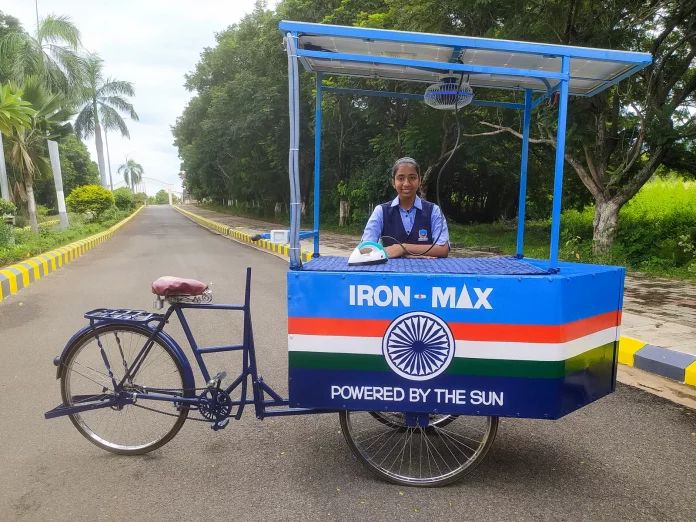Vinisha Umashankar was returning to her home in southern India from school a few years ago when she saw a man throwing away burnt charcoal on the side of the street.
He was an ironing vendor who pressed people’s clothes for a living – and his main appliance was an old-fashioned iron box, which he filled with hot charcoal that emitted a cloud of smoke. Umashankar counted at least six such vendors in her neighborhood in the temple town of Tiruvannamalai alone. She started thinking about how this was happening across India, where the ironing vendor is a fixture.
“It made me think about the amount of charcoal burnt every day and the damage it does to the environment,” says the 15-year-old. Producing and burning charcoal emits particulate matter that pollutes the air and releases greenhouse gases such as carbon dioxide, which contributes to climate change.
So Umashankar came up with an idea. Instead of using charcoal to heat up the irons, the vendors could use something abundantly available in India: the power of the sun. Over the span of six months in 2019, when she was just 12 years old, she designed a cart that had solar panels to power a steam iron. She pored over college-level physics textbooks to get an understanding of how solar panels work. Then, she submitted her concept to the National Innovation Foundation, run by the Indian government. Engineers there helped her build the full-scale working prototype and apply for a patent.
And so the Iron-Max was born. It’s a blue-painted cart shaped like an iron box with solar panels fitted on its roof. It’s attached to a bicycle to allow vendors to move through the neighborhood to collect clothes to press. Five hours of bright sunshine is enough to operate the iron for six hours. The energy can be stored in a battery to provide power on cloudy days. The cart also has a coin-operated cellphone and a cellphone charging point where people can pay to recharge their phones to supplement vendors’ earnings.
Umashankar and her solar-powered ironing cart are now getting global recognition. On Tuesday, she gave a powerful 5-minute speech at COP26, the U.N.’s climate change summit in Glasgow, Scotland, in which she urged world leaders to stop talking and start acting. She reminded them about how monumental their actions would be for her generation.
In September, she was named one of 15 finalists from more than 750 nominees for the inaugural Earthshot Prize launched by Prince William, Duke of Cambridge. The award gives five winners $1.3 million each to help scale up their environmental solutions.
Umashankar did not win the prize in her category, “Clean Our Air,” but was praised by judges for being the youngest finalist for the award. (The winner in her category was also from India and developed a portable technology that lets farmers to turn crop waste into fertilizer and biofuel instead of burning it, which creates air pollution.)
Even before the Earthshot Prize, environmentalists saw the potential in Umashankar’s innovation. Last year, Umashankar won the Children’s Climate Prize, a Swedish award for young innovators. “If implemented on a large scale, this is an invention that can have a significant positive impact on India’s air quality and people’s health,” the jury of the Swedish prize said. The prize included a financial reward of more than $11,000 to further develop her innovation.
